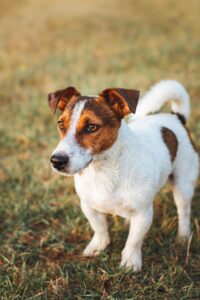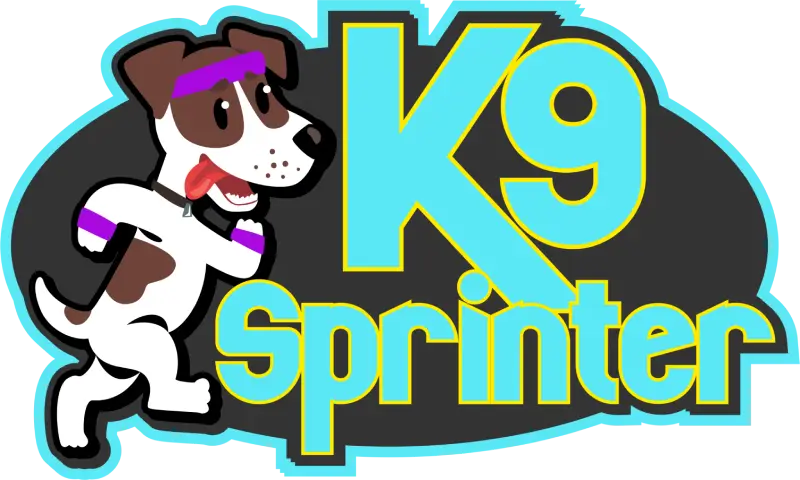Should You Play Fetch Every Day?
“But Frank, my dog lives for fetch. Should we do it daily?” This question from a concerned pet owner captures a common dilemma among many dog owners, especially those with working breeds like Malinois, German Shepherds, Dutch Shepherds, Pitbull or any high-prey-drive dog. And my answer? No, especially not for these breeds. While fetch can be a fun activity, it’s crucial to understand what it does to your dog’s mental and emotional state.
High-Drive Dog Breeds and Their Characteristics
High-drive dog breeds, often referred to as working breeds, are specifically bred for tasks that require significant mental and physical engagement. Here’s a closer look at some of these breeds and what makes them unique:
Common High-Drive Dog Breeds
 Belgian Malinois
Belgian Malinois
Origins and Traits The Belgian Malinois is a member of the Belgian Shepherd family and was originally bred in Belgium for herding. Today, they are primarily known for their work in police and military roles due to their exceptional intelligence, speed, and work ethic. Malinois are medium-sized dogs with a short, fawn-colored coat and black markings.
Behavioral Characteristics Malinois are known for their high energy levels and require a great deal of physical exercise and mental stimulation. They excel in tasks that involve obedience, tracking, and protection. Their intense work drive and sensitivity to handling make them suitable for experienced dog handlers.
Recommended Activities
- Protection Sports: Activities like IPO (Schutzhund) highlight their capabilities in tracking, obedience, and protection.
- Search and Rescue: Their keen sense of smell and drive make them excellent search and rescue dogs.
- Agility Training: This can help manage their high energy levels while providing mental stimulation.
 German Shepherd
German Shepherd
Origins and Traits Originally bred in Germany for herding and guarding sheep, German Shepherds are now a favorite choice for many roles, including police and service dogs, due to their strength, intelligence, and versatility. They are large dogs with a distinctive black and tan coat.
Behavioral Characteristics German Shepherds are highly active and enjoy having a purpose, thriving in structured environments where they can use their intelligence. They are protective of their family and territory, making excellent guard dogs.
Recommended Activities
- Advanced Obedience Training: They respond well to challenges and complex commands.
- Herding: Tapping into their natural instincts can be highly satisfying for them.
- Tracking Competitions: Utilizes their natural scent capabilities.
 Border Collie
Border Collie
Origins and Traits Border Collies were developed in the border country between Scotland and England for herding livestock, particularly sheep. Known as the world’s premier sheep herder, they are incredibly intelligent and energetic, with a keen eye for movement.
Behavioral Characteristics This breed is known for its intense “herding eye,” an intense focus used to control other animals. They require significant mental and physical activity to remain healthy and happy, often outperforming other breeds in competitive sports.
Recommended Activities
- Herding Trials: Engage their natural herding instincts.
- Agility Training: Their quick reflexes and agility make them excellent candidates.
- Flyball: A sport that combines speed, focus, and teamwork.
 Australian Shepherd
Australian Shepherd
Origins and Traits Despite its name, the Australian Shepherd was actually developed in the United States to herd livestock. They are well-regarded for their versatility and trainability, often sporting a colorful coat that can include blue merle, red merle, and black or red tri-color.
Behavioral Characteristics Australian Shepherds have a lot of energy and thrive when they have a job to do. They are highly intelligent and easy to train, making them suitable for many different types of activities and sports.
Recommended Activities
- Disc Dog: Their agility and enthusiasm make them stars in disc-related activities.
- Herding: They excel in natural herding activities and competitions.
- Obedience Training: Keeps their minds active and engaged.
 Siberian Husky
Siberian Husky
Origins and Traits Originally bred by the Chukchi people in Siberia to pull sleds over long distances, Siberian Huskies are known for their endurance and willingness to work. They have a thick double coat, distinctive markings, and striking blue or multi-colored eyes.
Behavioral Characteristics Huskies are notoriously independent and can be challenging to train. They have a high prey drive and a need for regular, vigorous exercise to prevent boredom and potential escape behavior.
Recommended Activities
- Sledding: Utilizing their natural abilities in winter sports.
- Canicross: A form of cross-country running with dogs.
- Hiking: Explores their need for adventure and exercise.
 Jack Russell Terrier
Jack Russell Terrier
Origins and Traits Developed in England about 200 years ago to hunt foxes, Jack Russell Terriers are small, tenacious, and incredibly energetic. They are predominantly white with black and brown markings.
Behavioral Characteristics Jack Russells are known for their fearless nature and boundless energy. They require consistent and firm training to manage their strong hunting instincts and tend to excel in activities that challenge both their minds and bodies.
Recommended Activities
- Earthdog Trials: Tests their ability to track and hunt underground.
- Agility Training: Allows them to burn off energy and be mentally stimulated.
- Interactive Games: Keep them engaged and focused.
 Springer Spaniel
Springer Spaniel
Origins and Traits Springer Spaniels, part of the sporting group, were originally bred to flush and retrieve game. They are friendly, eager to please, and known for their boundless energy and affable nature.
Behavioral Characteristics Springer Spaniels are extremely active and sociable. They do well with activities that involve retrieving and water, and they thrive on interaction with their human companions.
Recommended Activities
- Field Trials: Highlight their natural retrieving instincts.
- Water Retrieval Games: Make use of their love for swimming and retrieving.
- Obedience Training: Helps to focus their energy and strengthens their discipline.
Doberman Pinscher
Origins and Traits Bred in Germany in the late 19th century by Karl Friedrich Louis Dobermann, Dobermans are known for their strength, speed, and endurance. They were originally designed to be protectors and companions, which they excel at.
Behavioral Characteristics Dobermans are fiercely loyal to their owners and can be a bit aloof with strangers. They are highly intelligent and require a lot of mental stimulation to keep from becoming bored. They are well suited for guard and protection roles but need consistent, positive training to ensure they are well-adjusted.
Recommended Activities
- Schutzhund: Tests their tracking, obedience, and protection skills.
- Advanced Obedience: Keeps their minds sharp and engaged.
- Jogging or Running: Provides the physical exercise they crave.
 Dutch Shepherd
Dutch Shepherd
Origins and Traits Originally from the Netherlands, Dutch Shepherds were all-purpose farm dogs, used for herding, guarding, and companionship. They are highly trainable, reliable, and robust, similar in build and temperament to their Belgian cousins but with a brindle coat.
Behavioral Characteristics Dutch Shepherds thrive on structured activities and are known for their ability to perform a wide range of tasks. They possess a balanced temperament and are both intelligent and obedient, making them excellent candidates for police and military work.
Recommended Activities
- Protection Sports: Like their Belgian counterparts, they excel in disciplines that involve protection and obedience.
- Herding: Engages their natural instincts and provides physical and mental exercise.
- Search and Rescue: Utilizes their problem-solving skills and physical endurance.
 Cane Corso
Cane Corso
Origins and Traits Originating from Italy, Cane Corsos were bred as guard dogs and to hunt big game, such as wild boar. They are large, powerful dogs with a commanding presence and protective nature.
Behavioral Characteristics Cane Corso’s are known for their loyalty and protective instincts. They require firm and consistent training from an early age to ensure they are well-socialized and controlled. Their strong protective nature makes them excellent guard dogs, but without proper training, they can become overly aggressive.
Recommended Activities
- Weight Pulling: Capitalizes on their strength and endurance.
- Guard Dog Training: Enhances their natural protective instincts in a controlled manner.
- Obedience Training: Fundamental for maintaining control and fostering a positive owner-dog relationship.
 Pit Bull
Pit Bull
Origins and Traits
Often referring to breeds like the American Pit Bull Terrier and American Staffordshire Terrier, Pit Bulls were originally bred in the 19th century for bull-baiting and later as farm and companion dogs. They are medium-sized, muscular, and athletic with a short coat and a powerful build. Known for their determination and loyalty, Pit Bulls are often misunderstood due to their history, but when properly trained and socialized, they make loving and dependable companions.
Behavioral Characteristics
Pit Bulls are energetic, people-oriented dogs who thrive on human interaction and structure. They are intelligent, eager to please, and highly trainable, especially when motivated by praise or food rewards. Their tenacity can lead to object fixation or frustration if not given appropriate outlets, making regular physical and mental challenges essential. With proper guidance, Pit Bulls are affectionate, focused, and capable of excelling in a wide variety of activities.
Recommended Activities
- Advanced and Off-Leash Obedience Training: Their desire to please makes them highly responsive to structured, reward-based training.
- Tug Games with Rules: Helps channel their strength and tenacity into a controlled and rewarding activity.
- Flirt Pole or Agility Work: Provides high-intensity exercise and mental stimulation in a safe and structured way.
Miniature Versions of High-Drive Breeds
Miniature versions of high-drive breeds offer the same intelligence, energy, and work ethic as their standard-sized counterparts, but in a smaller package. This size difference impacts their physical and exercise needs, but not their inherent drive and behavior patterns.
Characteristics and Care
Miniature high-drive breeds, such as the Miniature Australian Shepherd, Miniature American Shepherd, or smaller versions of working terriers like the Jack Russell Terrier, retain much of the personality and traits of the larger breeds. They are equally eager and capable of learning and participating in activities like agility, obedience, and herding or tracking simulations. However, due to their smaller size, these miniatures require some modifications in their care and training:
- Exercise Requirements: While they still need plenty of exercise, the scale and duration might be less than their larger counterparts. For instance, miniature breeds can benefit from shorter but more frequent training sessions to prevent fatigue and maintain their health.
- Mental Stimulation: Mental stimulation remains critical for miniature versions of high-drive breeds. Puzzle toys, training new tricks, and interactive play that challenges their intellect are essential to keeping them mentally satisfied and prevent behavioral issues associated with boredom.
- Physical Activities: Activities should be appropriately scaled to their size. For example, agility courses for miniature breeds should have obstacles that are proportionate to their smaller stature to prevent injuries and ensure the activity remains fun and challenging.
- Health Considerations: Smaller breeds may be more susceptible to injuries from activities that are too intense or improperly scaled. Careful attention should be given to the type and amount of physical activity to avoid joint and bone issues. Regular check-ups with a veterinarian can help monitor their physical condition and adapt their activities as needed.
Training and Socialization
Miniature high-drive breeds benefit immensely from early socialization and consistent training. This process helps them develop confidence and manage their innate drives constructively:
- Socialization: Exposing them to various environments, people, and other animals at a young age helps miniaturize high-drive breeds to become well-adjusted adults. Socialization must be conducted in a controlled manner to ensure positive experiences and proper behavior shaping.
- Training: Consistent, balanced or holistic training methods work well with miniature breeds, capitalizing on their eagerness to please and capacity for learning. Training sessions should be engaging and varied to hold their attention and make the most of their quick learning abilities.
- Activities Suitable for Size: While they may participate in similar activities as their larger versions, adapting these to suit their smaller size and energy levels can help in providing adequate physical and mental exercise without overtaxing them. For instance, a mini agility course, modified herding tasks, or scaled-down fetch games can provide the exercise and mental engagement they need.
Miniature versions of high-drive breeds are as capable and energetic as their standard counterparts, requiring a dedicated approach to meet their physical and mental needs. Owners should provide them with a balanced routine that includes appropriate physical exercise, mental stimulation, and social interactions to harness their potential fully. With the right care and training, these miniature powerhouses can lead fulfilling lives as active, well-behaved members of their families.
Why Daily Fetch Can Be Problematic for High-Drive Breeds
Fetch may seem like a perfect game for dogs—it taps into their instinct to chase, it gets them moving, and it often brings pure joy to both dog and owner. But for high-drive breeds like the Belgian Malinois, Border Collie, or German Shepherd, fetch can have unexpected downsides when it becomes a daily routine or the primary outlet for energy.
Fetch fundamentally stimulates a dog’s prey drive:
- The ball represents prey
- The act of throwing mimics the movement of prey
- Chasing the ball activates the hunt instinct
In natural predator behavior, the prey sequence ends with chase, catch, and kill, which offers resolution and physiological closure. But in fetch, that sequence is never completed. There is no “kill”—just an endless loop of anticipation and arousal. This incomplete prey cycle keeps the dog in a heightened state of arousal with no natural “off switch,” and over time, that can lead to issues.
Behavioral and Physiological Consequences
Dogs left in this elevated, unresolved state of excitement can begin to experience both behavioral and health problems. Common side effects include:
- Hyperactivity and Inability to Relax: Without mental closure, dogs may become constantly “on,” unable to settle even in quiet environments.
- Increased Reactivity: Dogs may begin reacting impulsively to any movement—bikes, joggers, squirrels, or even shadows—mirroring their fetch experience.
- Object obsession, such as a dog fixating on a ball, stick, or toy, may seem harmless or even entertaining at first—but it can be a sign of underlying compulsive behavior. This type of fixation often interferes with a dog’s ability to relax, respond to cues, or engage in normal social behavior. Over time, it can lead to heightened stress, frustration, and even aggression if the object is withheld or removed. In extreme cases, object obsession can dominate a dog’s life, making it difficult to focus on training, develop impulse control, or find enjoyment in other healthy activities.
- Health Issues: Chronic stress from unresolved arousal can impact sleep quality, digestion, and immune function.
- Burnout: Just like humans, dogs can burn out when their nervous systems are kept in overdrive for too long, potentially leading to fatigue, irritability, and decreased performance.
When Fetch Works Well
That said, fetch isn’t inherently “bad.” In fact, it offers several benefits when used in moderation:
- Physical Exercise: It helps burn off energy, especially in young or athletic dogs.
- Mental Engagement: It stimulates anticipation, memory (where did it land?), and sometimes problem-solving.
- Bonding Time: When used as part of structured play, fetch can be a joyful and interactive experience between owner and dog.
Finding the Balance
The key issue arises when fetch becomes the only—or even primary—activity in a high-drive dog’s life. These dogs were bred for complex tasks that engage their brains as much as their bodies. Fetch alone, without mental stimulation or a balanced routine, can lead to the same effect as giving a child endless sugar with no boundaries.
If your dog lives for fetch, you don’t have to cut it out entirely. But consider using it strategically: as a reward, not a default. Incorporate activities that complete the prey cycle, teach impulse control, and provide mental engagement. These might include advanced obedience, scent work, tug games with rules, or structured play that ends with calm decompression.
Ultimately, fetch should be part of a balanced enrichment plan—not the whole thing.
Alternatives to Daily Fetch for High-Drive Breeds
Structured Agility Training
- Agility training involves navigating a course with various physical obstacles including jumps, tunnels, weave poles, and seesaws, which test a dog’s speed, dexterity, and obedience under time pressure. Specific examples include teaching a dog to quickly weave through a series of poles, which requires precision and agility, or having them navigate a teeter-totter to learn balance and control. These courses can be adjusted in complexity based on the dog’s experience level, providing a continual challenge. Completing a course successfully under the guidance of a handler not only boosts a dog’s confidence but also strengthens the communication and trust between the dog and its owner, crucial for developing a strong partnership.
 Herding or Tracking Competitions
Herding or Tracking Competitions
- Herding competitions might involve trials where dogs must herd a group of sheep through a set course and into a pen, requiring strategic movement and patience, which taps into their natural herding instincts. Tracking competitions, on the other hand, may involve the dog following a scent trail over different terrains to find hidden objects or people, showcasing their natural hunting skills. These competitions are held in varied environments, from open fields to wooded areas, which helps keep the training sessions diverse and exciting. Participating in these activities provides excellent physical and mental exercise and enriches the dog’s training routine beyond typical daily walks or play.
Advanced Obedience Training
- Advanced obedience training is one of the most effective ways to mentally challenge high-drive dogs and redirect their energy into focused, structured work. This type of training goes far beyond the basics—it includes tasks like off-leash walking in busy public spaces, where the dog must stay attentive and responsive to commands despite environmental distractions. Dogs are taught to perform specific tasks on cue, such as retrieving designated items, switching between states (from high-energy play to calm focus), and even ignoring distractions like other animals or loud noises.
- A trademark of advanced obedience is precision and reliability. Dog owners may guide dogs through intricate patterns or obstacle courses using only voice or hand signals, which demands intense concentration, self-control, and clear communication between dog and handler. For high-drive breeds, this level of engagement taps into their need for mental stimulation while also strengthening their impulse control and resilience under pressure.
- Advanced obedience often builds on the skills introduced in fundamental training, where dogs learn the foundational behaviors and structure necessary to progress into more complex tasks. Once those are mastered, many dogs graduate into off-leash obedience, which adds a whole new level of difficulty and independence. Off-leash reliability is particularly important for high-energy dogs, as it allows them more freedom while still maintaining safety and control.
- Incorporating advanced obedience into your dog’s routine can completely shift their behavioral baseline. It not only satisfies their need to “work” but also gives them a deeper sense of clarity and purpose, preventing the chaos and overstimulation that often results from unstructured, repetitive activities like daily fetch.
Protection Sports
- Protection sports such as Schutzhund or IPO focus on a range of skills including tracking, obedience, and protection. For instance, in protection routines, a dog is trained to guard a specific object or area, to stop an intruder on command, or to release the intruder without harming them once they comply. These sports assess a dog’s control, agility, and courage in simulated scenarios that could occur in real life. The training for these sports is rigorous and structured, providing the mental engagement and discipline that high-drive breeds thrive on. It also helps develop a controlled demeanor in potentially high-stress environments, crucial for breeds tasked with protection roles.
Interactive Play
- Interactive play can involve puzzle feeders where dogs need to manipulate pieces to access treats, stimulating their problem-solving skills. Another example is interactive toys that move unpredictably, mimicking prey movements and engaging a dog’s hunting instincts in a controlled play environment. Games like hide-and-seek where the owner hides and the dog has to find them can enhance a dog’s scent tracking abilities and provide mental stimulation. These play sessions encourage dogs to think critically and solve problems, which prevents boredom and keeps them mentally sharp. They also allow owners to directly interact with their pets in a fun and engaging way, reinforcing the bond between them.
- Each of these activities offers unique benefits and challenges that are ideal for keeping high-drive breeds healthy, mentally stimulated, and socially engaged. They help prevent the development of undesirable behaviors by providing outlets for their energy and natural instincts in positive ways.
Why Diverse Activities Matter
Working breeds were bred for tasks that involve high levels of engagement and purpose, such as herding, guarding, or search and rescue. Fetch does not fulfill these needs on a psychological level. By diversifying the activities you do with your dog, you help them use their energy constructively and maintain better overall health and behavior.
For Owners of Non-High-Drive Breeds
What if you don’t own a high-prey-drive breed? Fetch can be a more suitable and enjoyable activity for many other types of dogs. For these dogs, fetch provides:
- Physical Exercise: It’s a great way to keep your dog active and manage their weight.
- Mental Engagement: Fetch stimulates the mind through the anticipation and retrieval of the ball.
- Strengthening Bonds: It’s a fun way to enhance the bond between you and your dog.
Why Advanced and Off-Leash Training Is Great for Non-High-Drive Dogs Too
- While advanced and off-leash training is often recommended for high-drive breeds, non-high-drive dogs benefit just as much—just in different ways. These types of training help build confidence, improve reliability, and strengthen the bond between dog and owner. For more sensitive or laid-back dogs, advanced training provides structure and gentle challenges that encourage mental engagement without overwhelming them. Off-leash work, in particular, gives calmer dogs the freedom to explore while still maintaining safety and responsiveness, making everyday life and outings more enjoyable and low-stress for both dog and handler.
Considerations for All Dog Owners
Regardless of breed, balance is key in any dog’s activity regimen:
- Variety is Vital: Even for lower drive dogs, incorporating a mix of physical and mental activities can lead to a more balanced and happy pet.
- Watch for Signs of Exhaustion: Dogs may not always show they’re tired until they’re overly exhausted. Keep play sessions moderate.
- Regular Check-ups: Keep an eye on your dog’s overall health, especially their joints and physical condition if engaging in repetitive activities like fetch.
For more tailored advice on engaging different dog breeds in appropriate activities, explore articles like Maximize Your Dog’s Fitness with Mobile Dog Gyms: Benefits and How They Work.
For those looking to deepen their understanding of managing high-energy dogs, consider reading about the impact of adopting a rescue dog and how these principles can apply to training and caring for high-drive breeds.
While fetch can be a part of your dog’s activity repertoire, it should not be the sole activity for high-prey-drive breeds. Balancing physical exercise with mental and emotional fulfillment is crucial. Remember, your goal is to provide activities that not only tire them out but also give them a sense of purpose and achievement. This approach leads to a healthier, happier dog and a more harmonious home environment.
